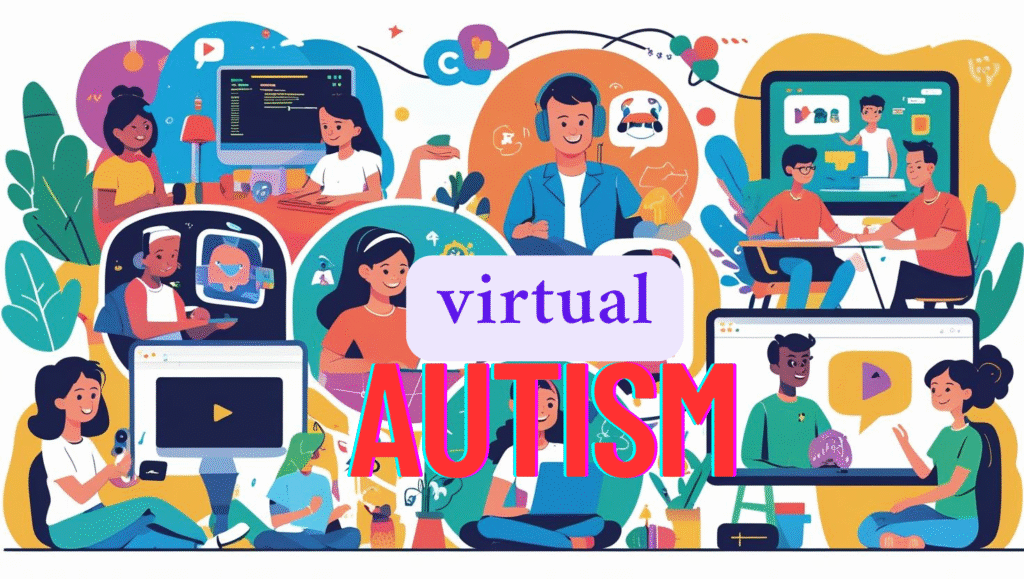Virtual Autism:A new concern growing among children

In recent years, the term “Virtual Autism” has been increasingly discussed in children, particularly in the context of excessive screen time. Particularly in younger children, who spend a lot of time on mobile screens, they gradually prefer to be alone. It refers to behaviors and developmental delays that look similar to Autism Spectrum Disorder (ASD) and are thought to be caused by excessive digital media exposure in young children.
What is virtual autism?
Virtual autism means that a child, usually between 0 and 3 years old, begins to show autism-like symptoms due to excessive screen time. Some of these symptoms may include:
- Decreased social interaction:The child does not make eye contact, is indifferent to others, and does not respond when his name is called.
- Problems in communication:Delay in language development, difficulty speaking, or repetition of words.
- Behavioural problems:Repetitive movements (such as hand flapping), obsessive behavior, and extreme sensitivity to new situations.
- Difficulty in emotional regulation:Extreme anger or irritability, or difficulty expressing your feelings.
It is important to note that these symptoms are different from an actual diagnosis of autism. In virtual autism, these symptoms can often improve if screen time is reduced and the child is given enough human interaction and developmental stimulation.
Causes of Virtual Autism
Research has shown that the main causes of virtual autism are the following:
- Lack of human interaction:Young children need real human interaction to learn language and social skills. Screen time disrupts this interaction.
- Lack of two-way communication:The content on screen is often one-way, not giving children the opportunity to respond or communicate.
- Effects on brain development:Excessive screen time can affect the parts of the brain that are responsible for socio-emotional and cognitive skills.
- lack of sleep:The blue light emitted from screens can disrupt children’s sleep patterns, which may lead to behavioral problems.
How to keep children safe?
To avoid virtual autism, there are some important steps parents can take:
- Limit screen time:
- Children under 18 months:According to the American Academy of Pediatrics (AAP), screen time should be completely avoided for children under 18 months, except for video chatting.
- Children aged 18-24 months:Very little time of quality educational programming with parents is acceptable for children this age.
- Children 2-5 years old:There should be no more than one hour of screen time per day for this age group, and that too should be educational and interactive.
- Choose quality screen time:If screen use is necessary, choose content that is educational, age-appropriate and that the child can actively engage in. Avoid passive viewing.
- Give priority to family activities:Play with children, read books, sing songs, and engage in outdoor activities. This will develop their social and language skills.
- Avoid TV and other screens in the background:Even if the child is not actively watching, a screen running in the background can also distract a child’s attention and reduce human interaction.
- Promote healthy sleep habits:Make sure kids get enough sleep. Turn off all screens at least an hour before bedtime.
It is important to raise awareness on virtual autism so that parents and caregivers understand the potential negative effects of screen time on young children’s development. By adopting healthy screen habits and prioritizing real-world experiences, we can promote our children’s holistic development.
If you want to connect me for free consultation then please contact me. send email or whattsapp me. meeting time 4PM to 8 PM ( monday to friday)